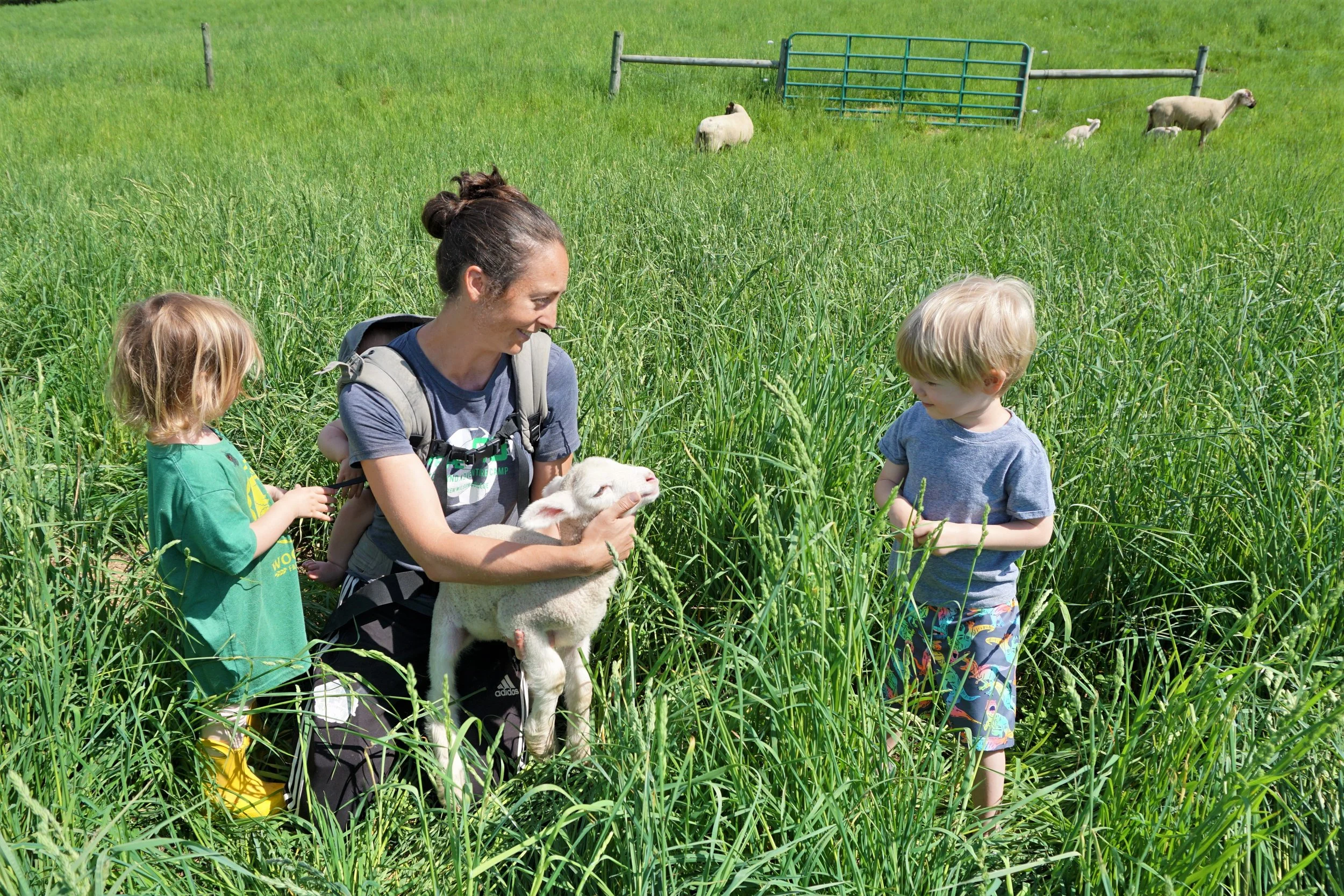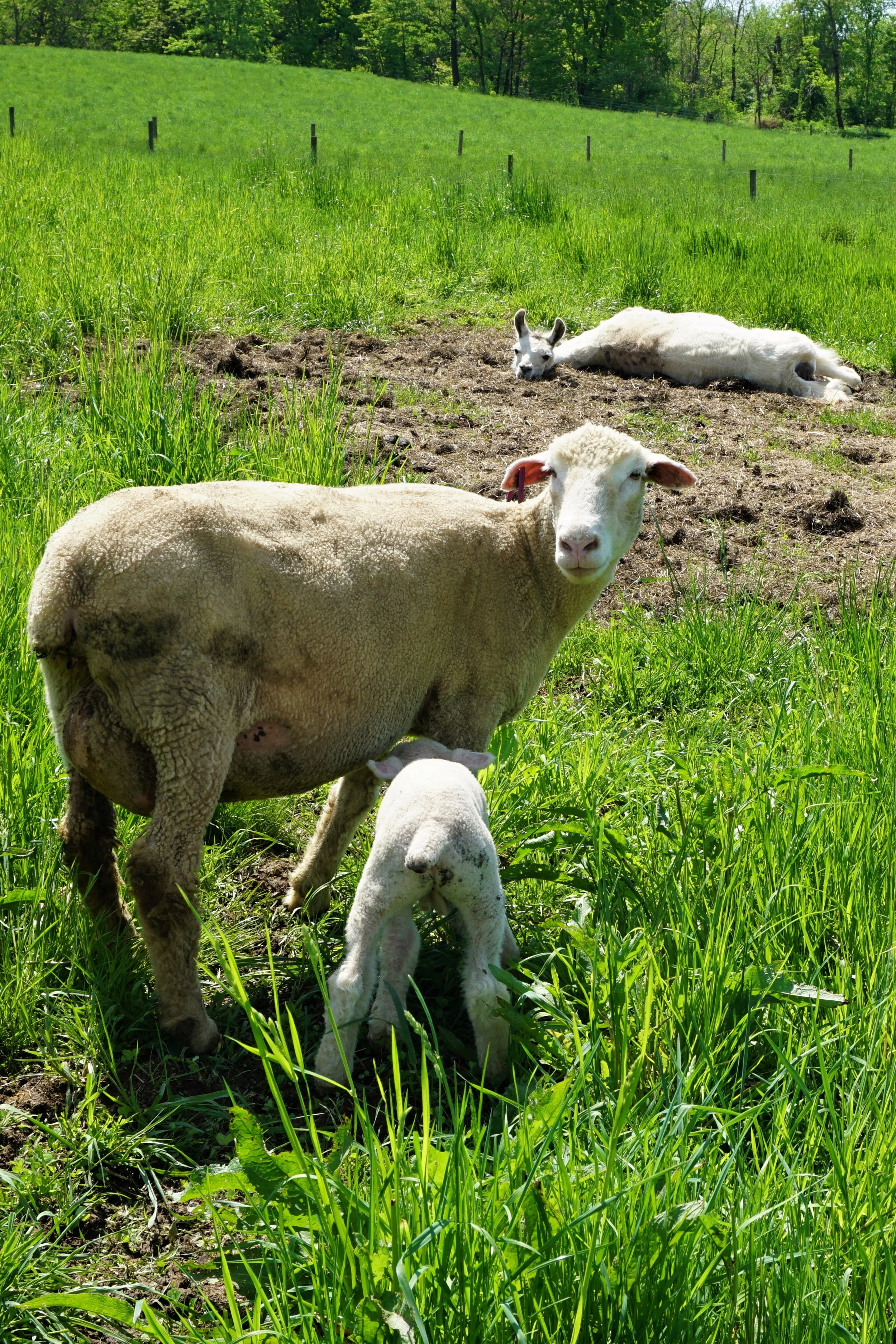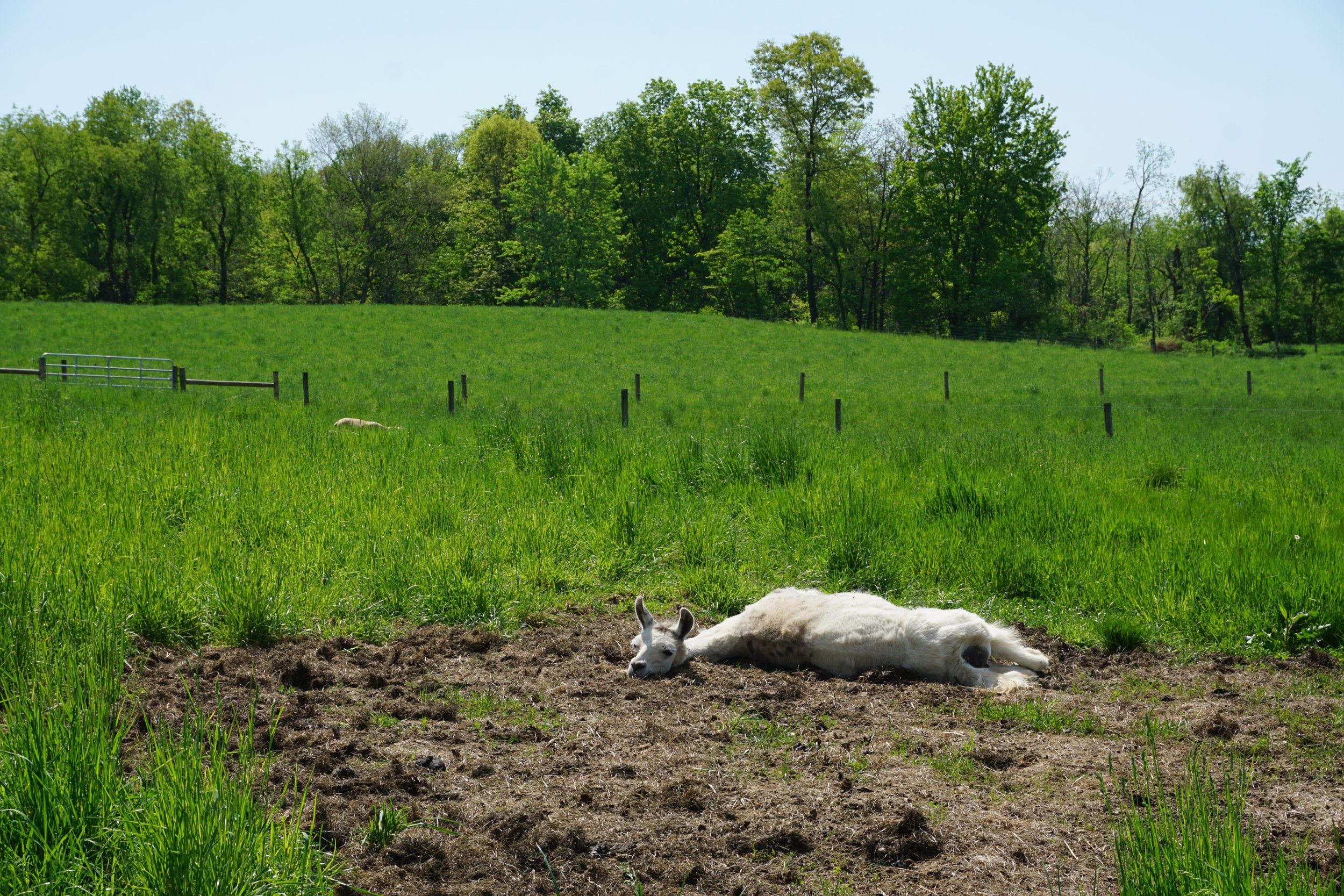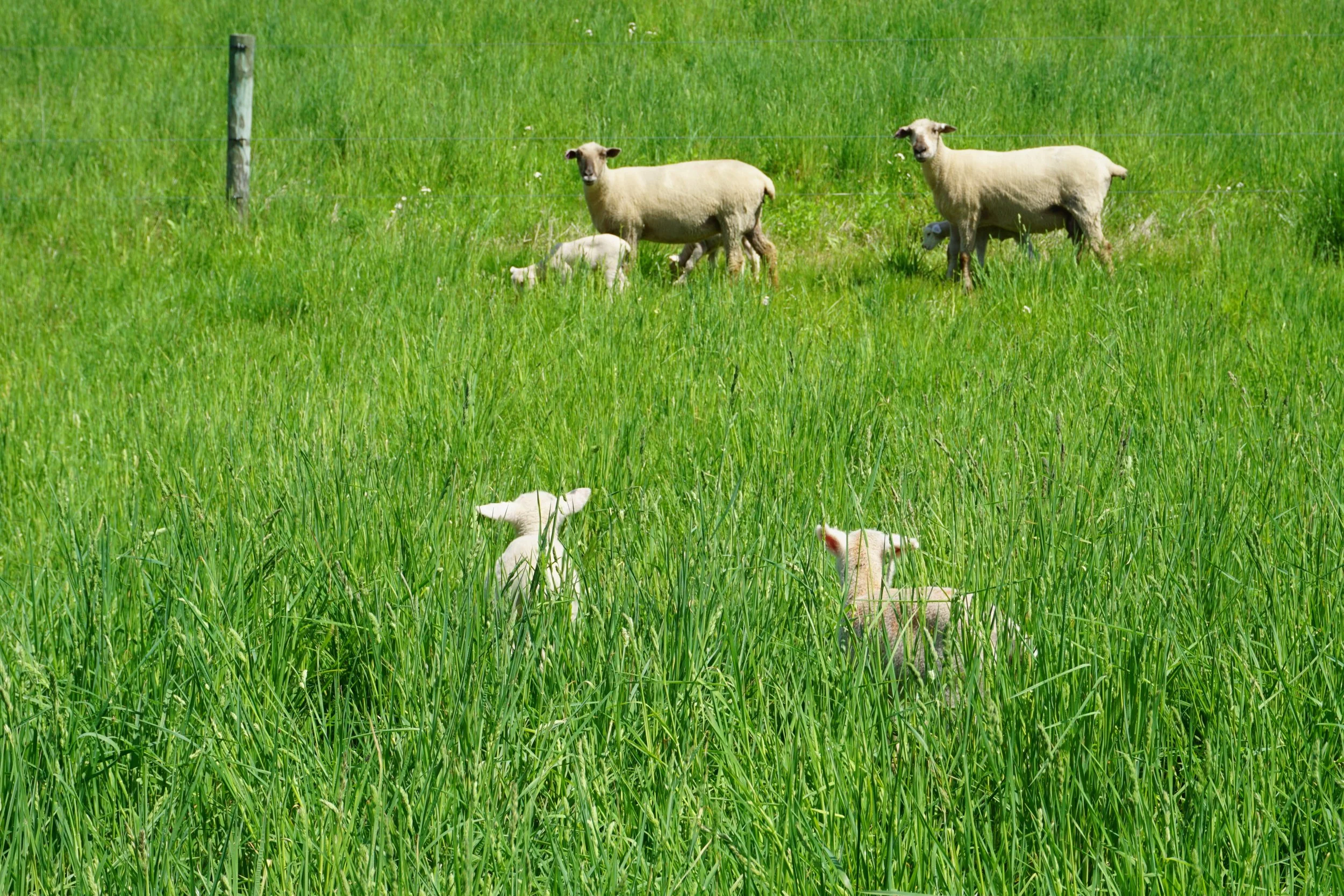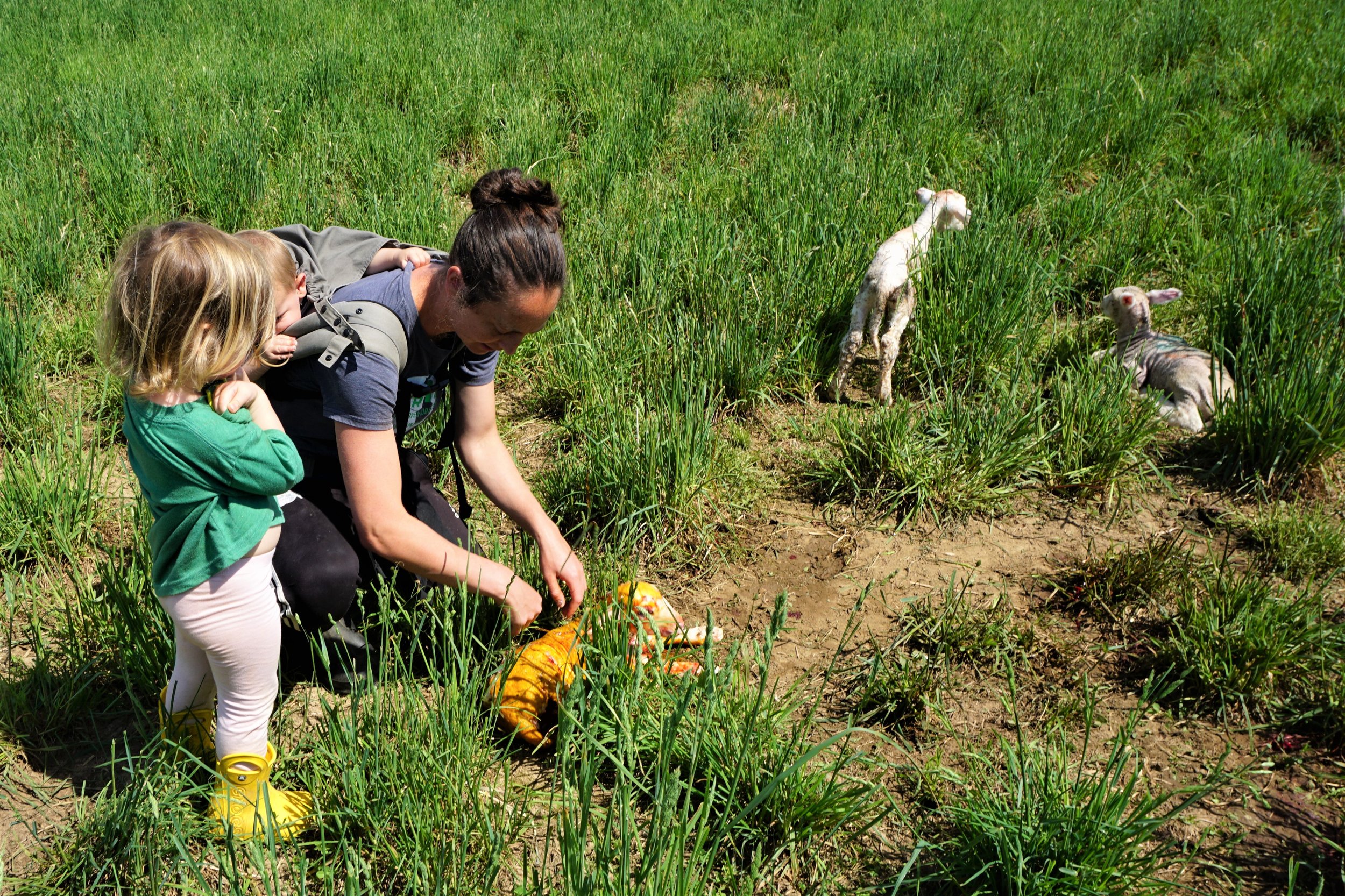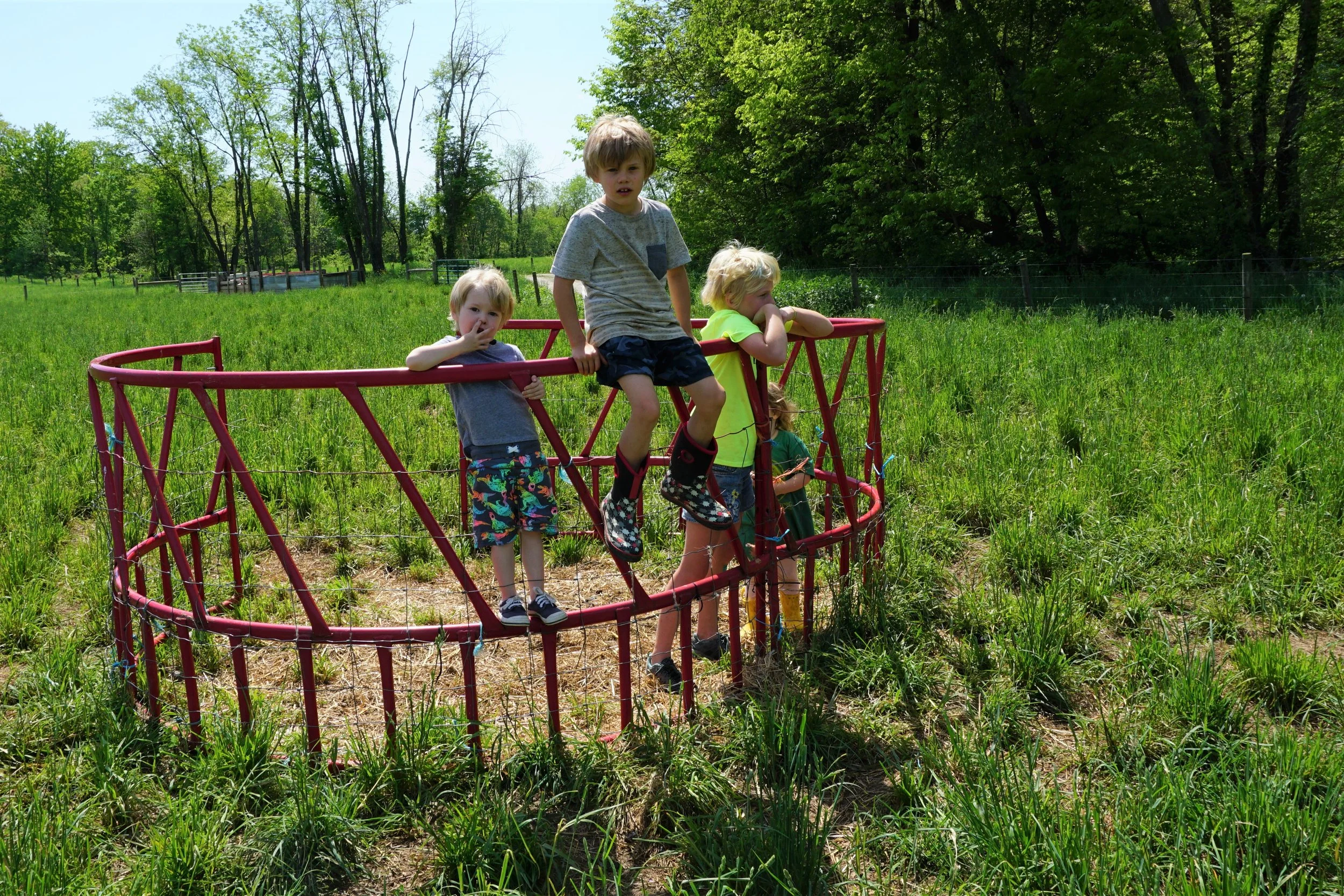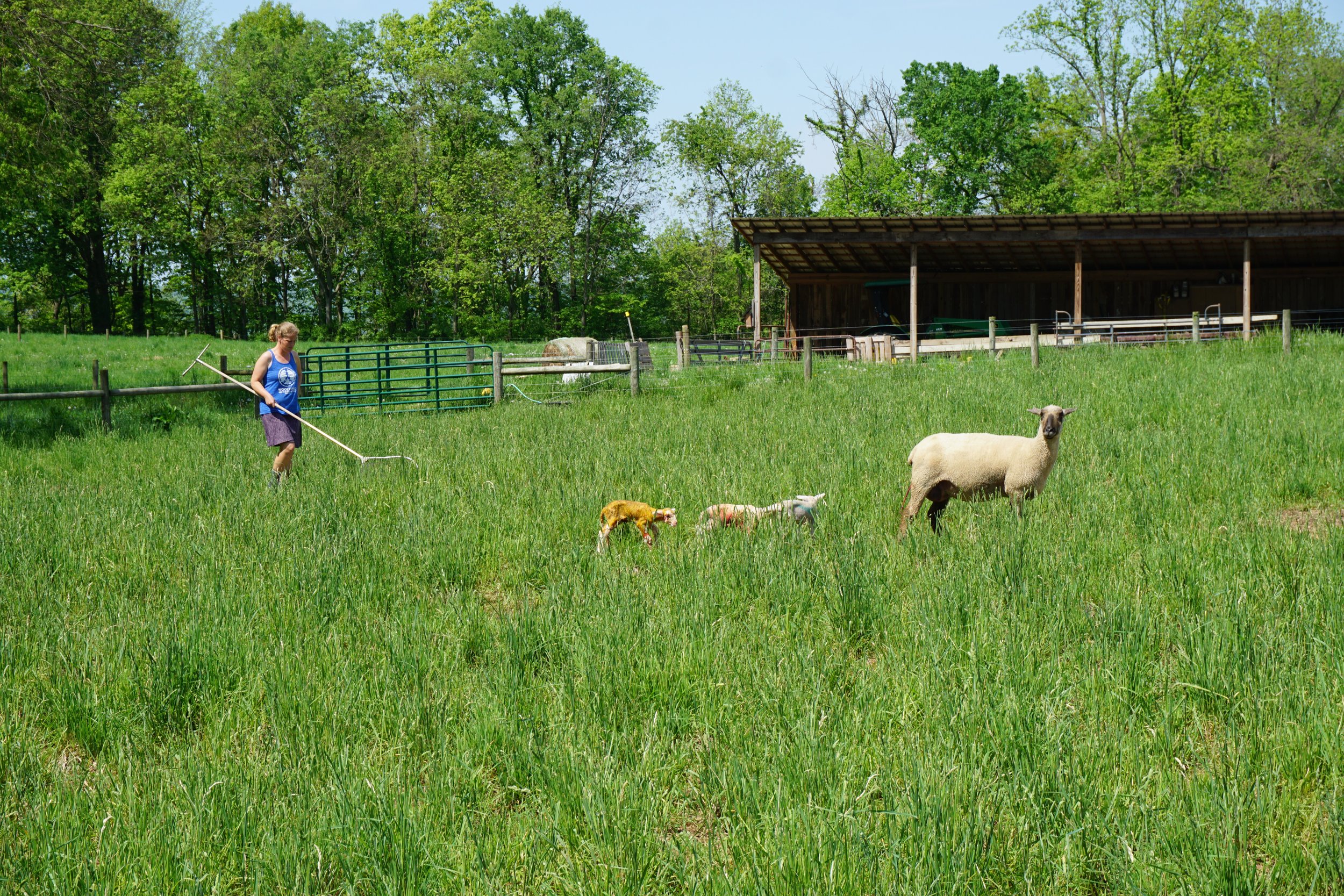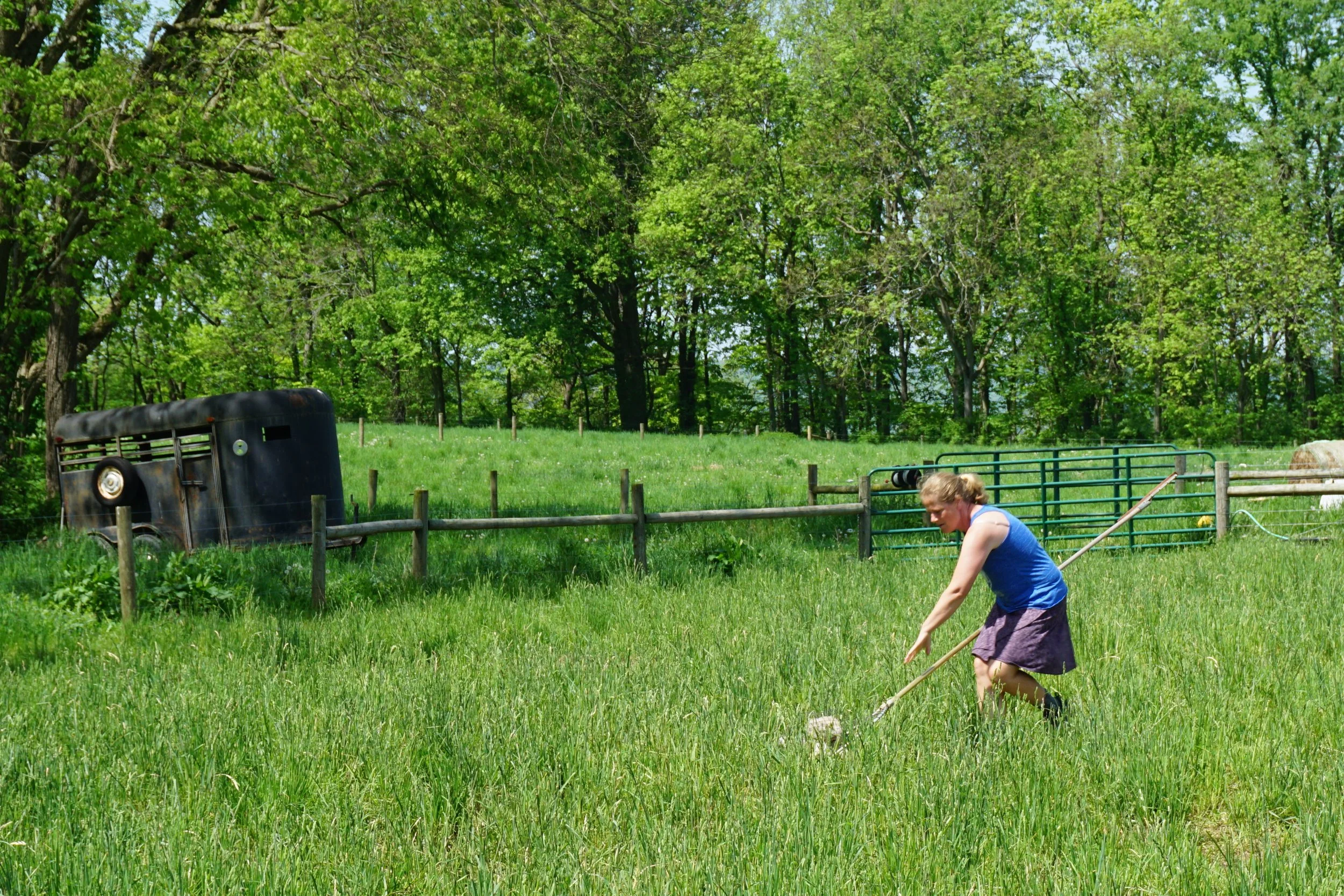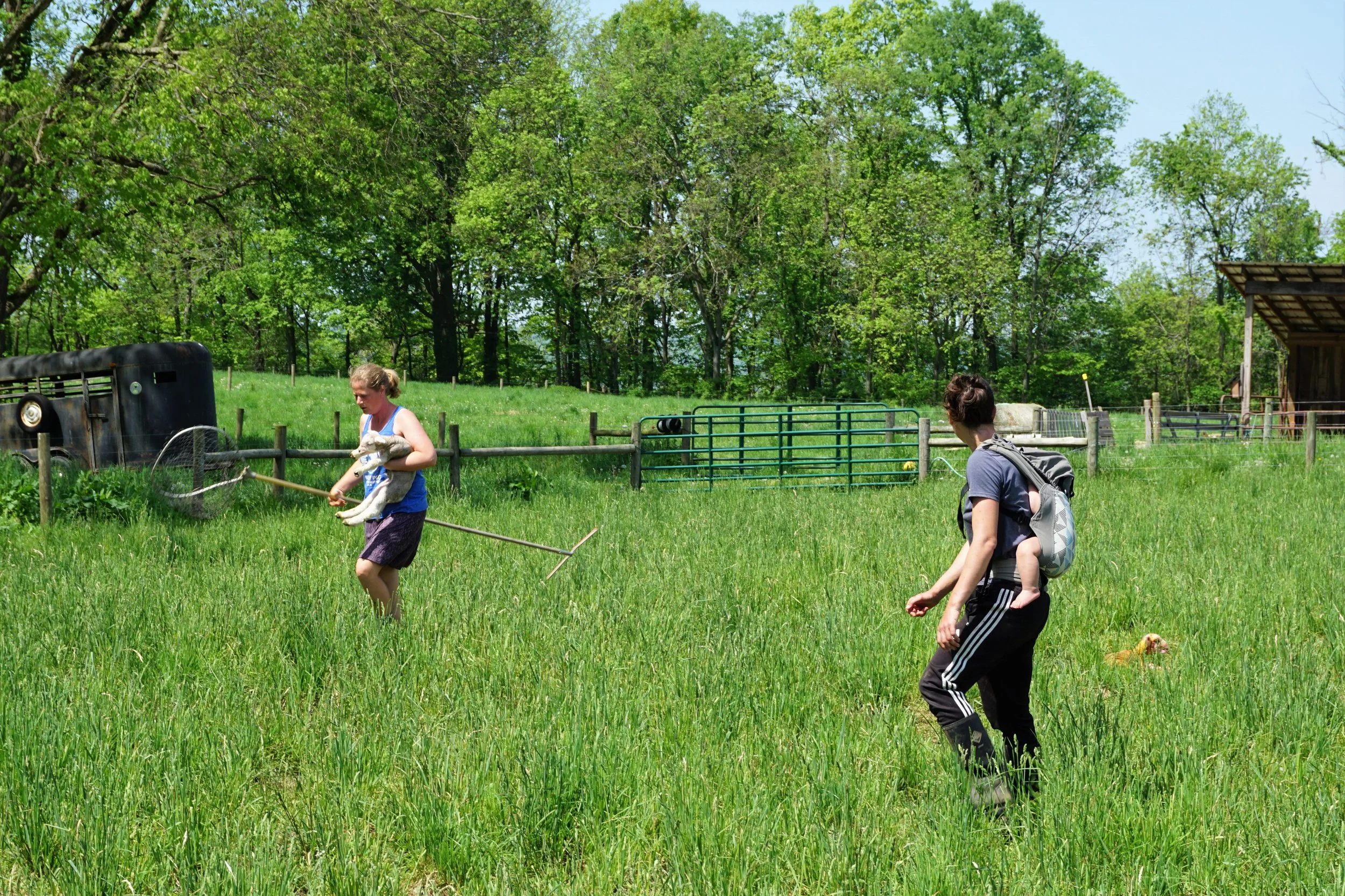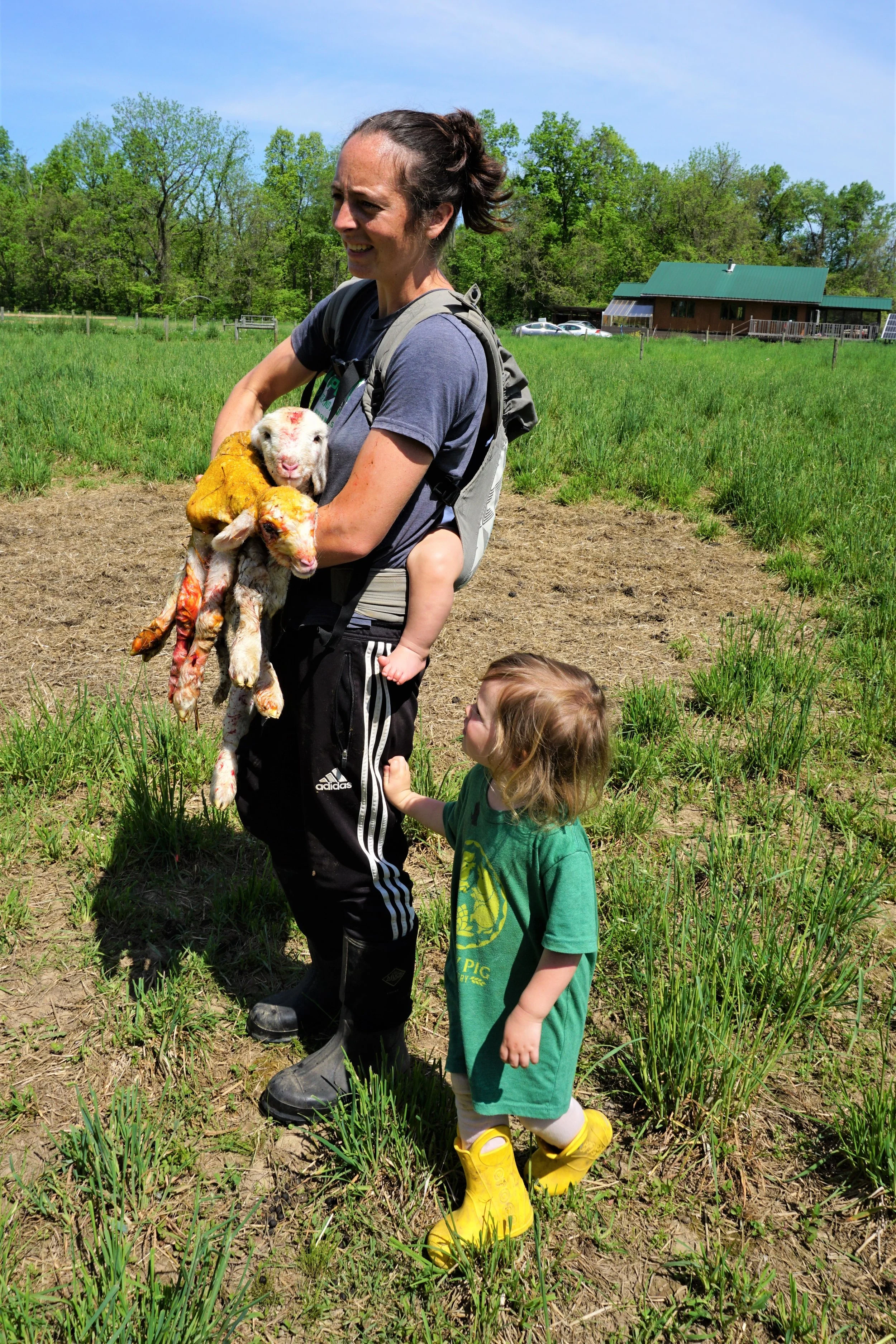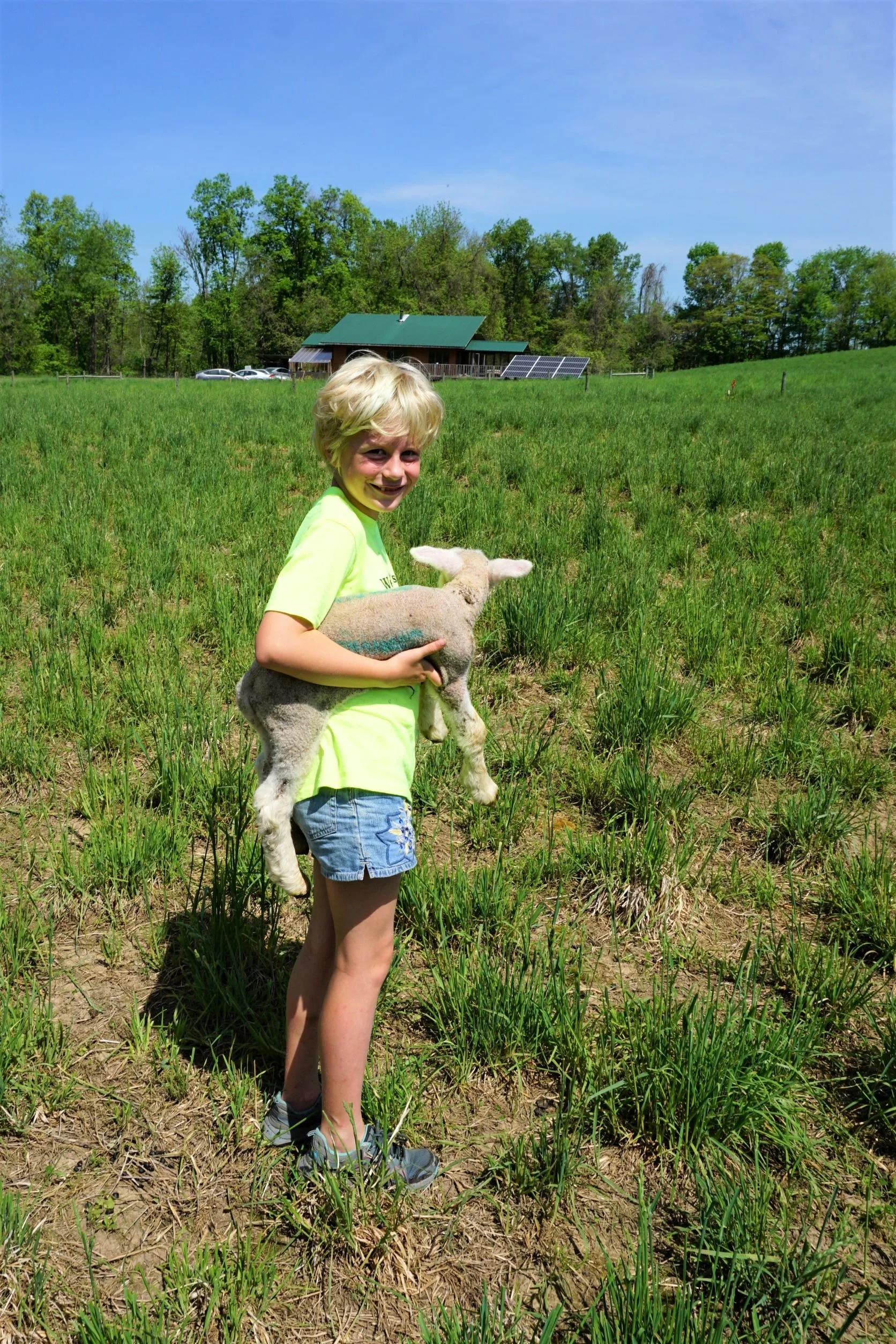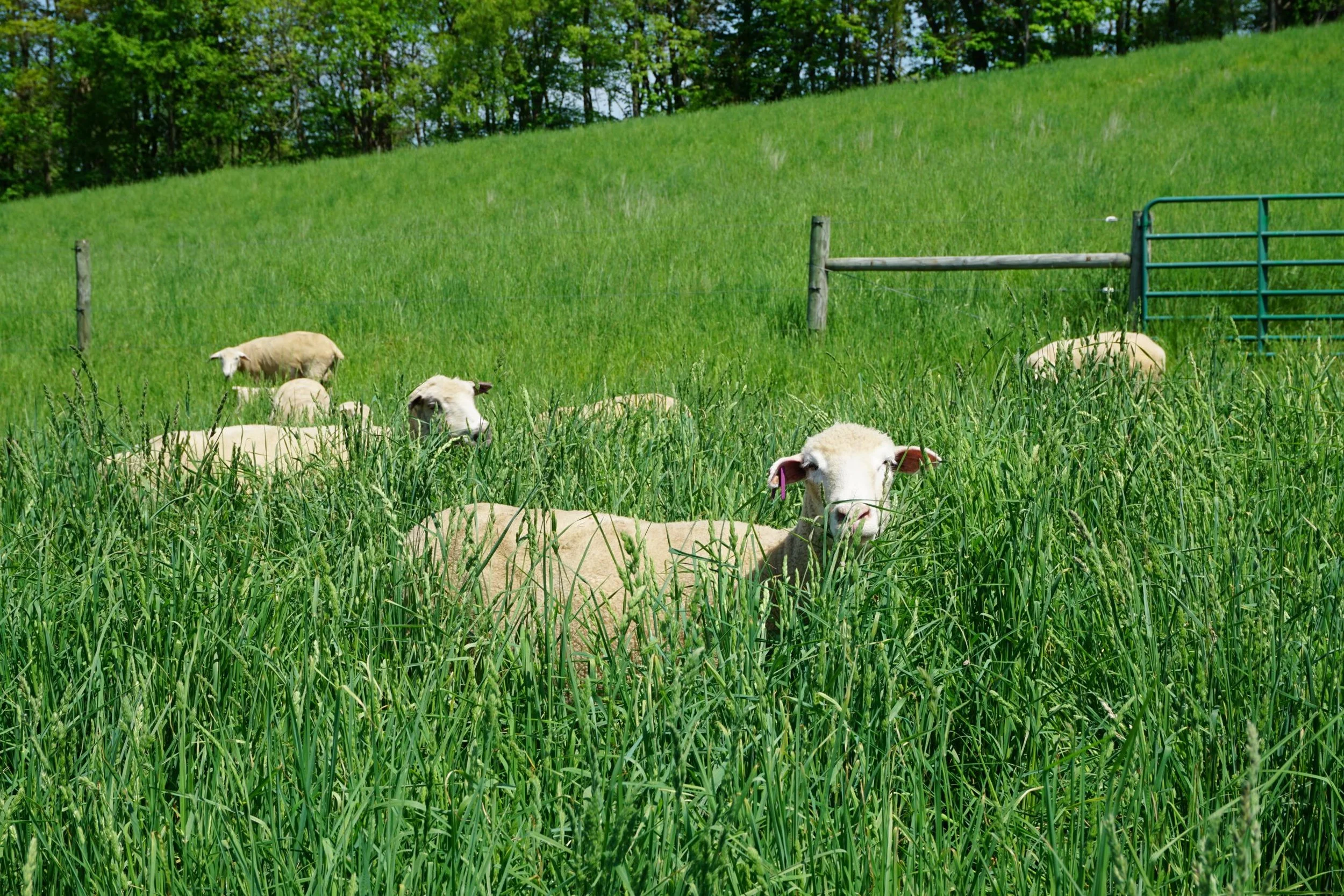Entry 10: Lambing
It’s lambing season on my in-laws’ farm, so yesterday, I took the kids over to meet some of the new arrivals. We set out with my sister-in-law, Lauren—a veterinarian and mom of two, who had her nine-month-old strapped to her back and her two-year-old at her side. Our mission: to check on a laboring ewe called Horny, so named for her adorable horns (a trait that apparently is determined by breed, not sex).
I’ve learned that there’s a lot that can go wrong during lambing season. There are birth complications—lambs getting stuck in the birth canal, prolapses, stillborns. And then there are after birth complications. Sometimes lambs die. Occasionally, Ewes die. Nursing ewes get mastitis. And mothers sometimes reject their babies, especially if they have multiple mouths to feed. A ewe can be coaxed to adopt a rejected or orphaned lamb, but that usually involves rubbing her afterbirth on the adoptee, or skinning a stillborn and draping its fleece over the adoptee.
With 38 ewes in their flock (expected to produce around 60 lambs), lambing season involves several weeks of nonstop crisis control for Lauren and her husband Aaron (who is unfortunately sitting this season out due to a recent surgery to repair a torn ACL).
As soon as we entered the pasture, we were greeted by a bleating ewe with a black face.
“That one is so anxious,” Lauren said, rolling her eyes. “She’s always losing her baby, then running all over the place looking for it.”
The lamb soon emerged from its hiding place in the grass and began suckling its now-content mother.
One ewe, six lambs. And a cameo by Horny (on the right). May 15, 2022 (Lucy Bryan).
Lauren caught another lamb so the kids could pet it. Then we headed past the guard llama, Miss Ferocity, into to lower pasture, where Horny was still pacing—no lambs yet. All around us were mothers, grazing the tall green grass, many with nursing lambs.
“That’s funny,” Lauren said, looking at one ewe with several lambs vying for a teat. “Last time I was down here, she only had one.”
“Looks like she had a couple more,” I said.
“I see six lambs,” Lauren said, marching toward the ewe. She squatted in the grass next to a brand-new lamb that I hadn’t seen, its fur a mustard yellow color. “It’s covered in meconium.”
It turned out that several older lambs (from different ewes) were nursing this mother, preventing her two lambs from getting vital colostrum.
“Your mama needs to clean you up,” Lauren said, massaging the meconium-covered lamb to simulate licks from its mother. She glanced at the ewe. “She’s very confused.”
Lauren tried to run off the older lambs, but two stubbornly remained. That’s when she called for backup.
My husband’s sister, Jael, soon arrived with her ten-year-old and seven-year-old. One of the older lambs had been retrieved by its mother, but the other had to be chased by a net-wielding Jael, trapped, and removed to the upper pasture.
Did I mention that Lauren is amazing? That’s two lambs and one 20-pound baby she’s holding!
We decided to drive the remaining sheep and lambs—save the confused ewe and her two babies—to the upper pasture. The kids and I spread out from the gate with our arms extended (forming a human wall) as Lauren and Jael drove the sheep toward the opening.
At last, Lauren reunited the two lambs with their mother, who (thankfully) seemed to recognize them as her own.
I love being part of this band of powerful, capable women. I also love that our kids get to learn about birth, death, and life through their experiences on the farm.
Horny, by the way, had twins and is doing just fine!

